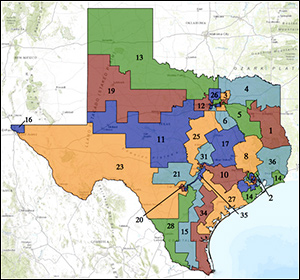By Jim Ellis
 Nov. 18, 2020 — The Census Bureau continues to make progress in completing the decennial population count and it appears the national apportionment report, which details how many congressional seats each state’s population earns, will be delivered to Congress in early January. Because of COVID, the apportionment process has been slightly delayed since the report typically has a year-end deadline.
Nov. 18, 2020 — The Census Bureau continues to make progress in completing the decennial population count and it appears the national apportionment report, which details how many congressional seats each state’s population earns, will be delivered to Congress in early January. Because of COVID, the apportionment process has been slightly delayed since the report typically has a year-end deadline.
Once apportionment is known, states then begin receiving their updated data necessary for drawing new congressional and state legislative districts. The states with the earliest primaries are the first to receive their data so they have adequate time to prepare their new congressional and state legislative boundaries.
In terms of apportionment, it is expected that Texas may gain approximately three seats and Florida two. The other gaining states are likely to be Arizona, Colorado, Montana, North Carolina, and Oregon. Those losing seats appear to be Alabama, California (for the first time in history), Illinois, Michigan, Minnesota, New York, Ohio, Pennsylvania, Rhode Island, and West Virginia. These estimates are not always completely correct, so this list could change when the actual apportionment is applied and publicly released.
A total of 34 states will draw their new districts solely through the legislative process. The remaining multi-member states operate through a type of commission, either an independent body or one under political control. Seven states are at-large meaning their congressional race is statewide. Rhode Island joins this group in 2021 as it will lose its second seat, while Montana will likely regain the district that was lost in the 1991 reapportionment.
In the Nov. 3 election, Republicans saw a net gain in state legislative seats around the country. Only one state saw its legislative chambers flip, however, the New Hampshire House and Senate moving from Democrat to Republican. This means Republicans will control 61 legislative chambers as compared to the Democrats’ 37. The Nebraska unicameral legislature is elected on a non-partisan basis, but Republicans control that chamber as well.
Republicans will again have the advantage in the states where the legislatures and governors determine the new map boundaries. Democrats, largely under the National Democratic Redistricting Committee that former Attorney General Eric Holder leads, targeted 13 states to protect or gain legislative chambers. They failed in all, as Republicans kept their majorities in each state they previously controlled and flipped New Hampshire to their column.






